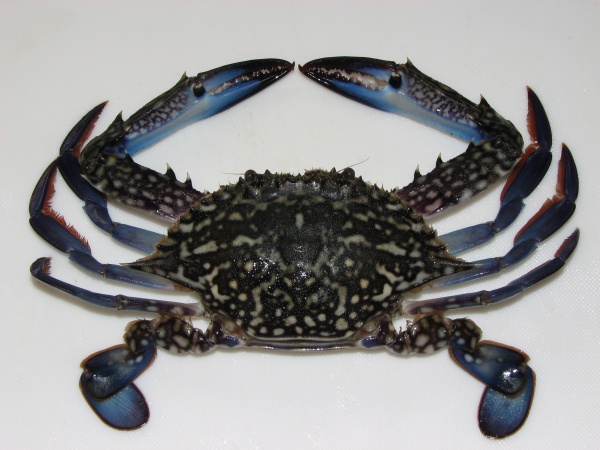Facts About Blue swimmer crab
Meet the Flower Crab: A Delicacy from the Depths
The Portunus armatus, commonly known as the flower crab, blue crab, blue swimmer crab, blue manna crab, or sand crab, is a captivating species found in intertidal estuaries across Australia, extending east to New Caledonia.
Distinctive Appearance and Behavior
Male flower crabs are striking, displaying bright blue shells adorned with white spots and equipped with elongated chelipeds (claws). In contrast, females exhibit more subdued colors. These crabs excel at camouflage, often burying themselves in sand or mud. They emerge to feed during high tide, consuming a variety of organisms. Known for their exceptional swimming abilities, they are highly sought after in the Indo-Pacific region. Their meat is considered a delicacy, leading to extensive commercial fishing. Furthermore, their rapid growth and high ammonia tolerance make them suitable for aquaculture.
Life in the Estuaries
Portunus armatus heavily relies on estuaries for nourishment and protection, with these habitats playing a crucial role in their life cycle. The transition from larva to adult involves several stages, with estuaries providing essential resources for growth and development. However, early juvenile crabs exhibit limited tolerance for low salinity levels, often migrating to seawater during the rainy season to escape the influx of freshwater.
Territorial Behaviors
Interestingly, male crabs are believed to be more territorial in colder waters, potentially explaining some of their behaviors in temperate regions.
